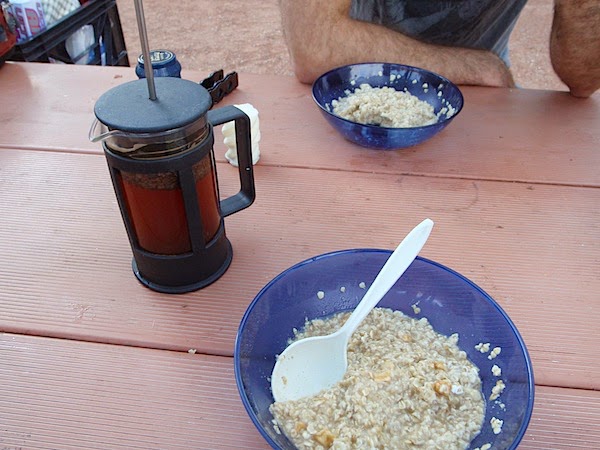Four hours was too long in the car for us, Lil' H, and our furry child - Toby, so we decided we'd stop at one of the famed California State Parks in Bug Sur along the way to stretch our legs and take a hike.
Our first stop was Limekiln State Park. Limekiln has a well-deserved reputation for breath-taking views of the Big Sur coast, towering Redwoods, and the four enormous kilns that give the park its name. We pulled in, paid for a day pass, then noticed the sign that every dog owner dreads:
The woman at the gate kindly gave us our money back and we continued up the road to Pfeiffer Big Sur State Park. This time we asked at the gate before paying - are dogs allowed on trails? The answer was, sadly, no. Moving north along Highway 1, we got the same answer at Andrew Molera State Park as well.
A helpful ranger explained to us that at Andrew Molera, like most California State Parks, dogs are allowed in campgrounds and on roads, but not on trails. He was kind enough to point out that we could back track just a few miles down the road to the Pine Ridge Trailhead at Big Sur Station to access the Ventana Wilderness trail network. The Ventana Wildnerness is managed by the United States Forest Service so their policies are different. Dogs had to be on leash but were allowed on trails.
 |
| Hiking in the Ventana Wilderness, dogs welcome! |
We were glad to finally have an option to stretch our legs, and we learned some important information. California State Parks has more information about visiting parks with your dog on their website. It's always a good idea to call whatever campground, park, or even hotel, your are visiting with your dog to be clear on their policies.
US Forest Service wilderness areas, forests, and campgrounds usually have more flexible dog policies, so aim for those properties when traveling with your dog. Also, local governments have their own policies, so do your research before planning a trip to county parks, city parks, national wildlife refuges, open spaces, and national parks as they all have their own rules and policies.
Also, please remember that it is NEVER a good idea to leave a dog locked in a car when you want to go somewhere that dogs are not allowed. The American Veterinary Medical Association has a helpful chart to help you see how warm it can really get inside your car, even in just a few minutes.
What are your favorite trails and campgrounds that are dog friendly?























